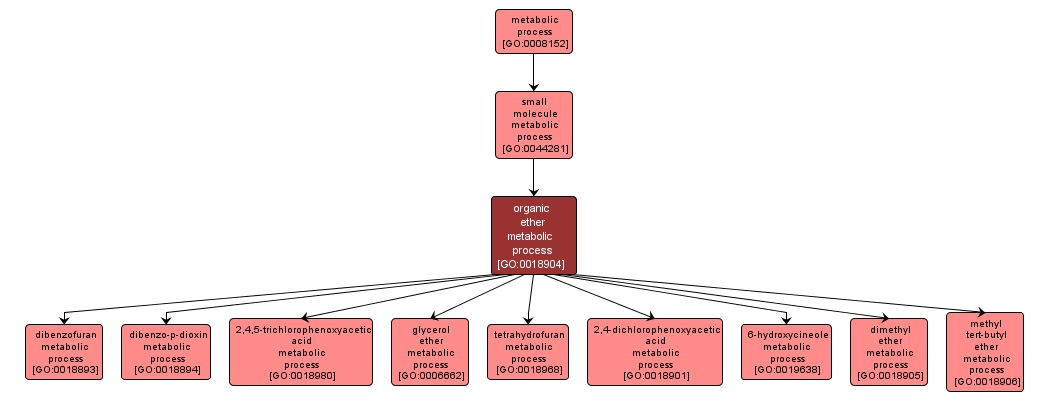GO TERM SUMMARY
|
| Name: |
organic ether metabolic process |
| Acc: |
GO:0018904 |
| Aspect: |
Biological Process |
| Desc: |
The chemical reactions and pathways involving organic ethers, any anhydride of the general formula R1-O-R2, formed between two identical or nonidentical organic hydroxy compounds. |
| Synonyms:
|
|

|
INTERACTIVE GO GRAPH
|














